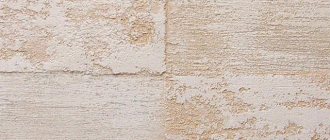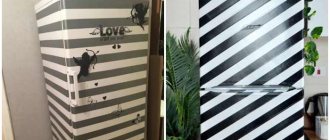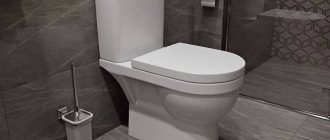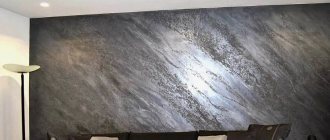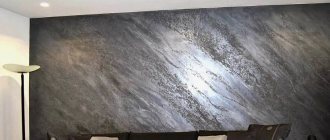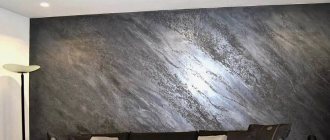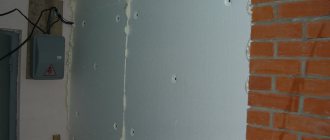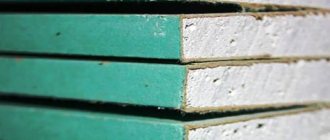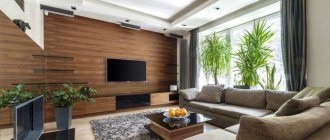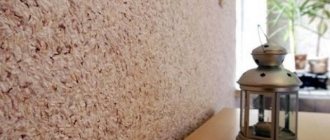There are two types of world maps as interior decor: classic and designer. To understand the differences between them, let's remember geography. Educational, or educational, maps of the world are divided into two sections: by scale and by content. In the first classification, maps are large-scale, medium-scale and small-scale. The scale is determined by the ratio of one centimeter to the number of kilometers - from two hundred thousand to more than a million. In the second classification - general geographical and thematic, for example, climatic, tectonic, political, economic, maps of soils, natural resources, population, animal habitats and others. All of them have their own designations and characteristic coloring. This is exactly what designers take as a basis when creating their original maps. In designer maps of the world, the decorative function subordinates and sometimes completely overlaps the others. Sometimes only the outlines of continents and large islands are preserved, from which only one can determine what is depicted on a poster or panel for wall decoration. Although there are wonderful examples of combining classic and designer versions of geographical maps. For example, this is a classic card in monochrome processing or in a combination of different materials.
Photo: hana-kimchi.com
Variety of cards
It's amazing how an entire planet can fit in one room - continents, countries and cities. All this wealth is made from different materials and decorates the room and objects in different ways. The most common options are:
- Decorative photo wallpaper on the wall. An effective, but quite expensive and labor-intensive option. Thanks to the quality of large-format printing, the smallest details are reproduced very clearly, and the size is limited only by the dimensions of the wall.
Photo wallpaper Source i1.photo.2gis.com
- An ordinary geographical map, framed or unframed, of any subject: political, physical, maritime, abstract. In addition to images familiar from geography lessons, children's varieties with bright large details (for example, animals) are also popular.
For a children's room Source amazon.com
- Outline stickers of continents and oceans. An easy-to-use and stylish way to decorate walls and objects. Stickers can be of any size and color, and are indispensable if you need to quickly refresh your interior.
Outline sticker Source i.pinimg.com
- Self-made images. The recipe is simple, and the result is amazing. It is enough to download the desired drawing from the Internet, which will serve as a template for future decor. The map can be cut out as a single element, or assembled, like a puzzle, from smaller parts. A variety of materials are used for this: self-adhesive vinyl film, plywood, cork panels or canvas.
Organizer map Source modesettravaux.fr
See also: Catalog of companies that specialize in interior redevelopment
If we consider cartographic images as interior decor, we can distinguish the following design options:
- Classical. Familiar contours, as if copied from the pages of school atlases. Suitable for decorating modern interiors.
Classics of the genre Source i.pinimg.com
- Antique styled. The vintage style has many fans, so the scope of “vintage” (especially sea, navigation) maps is very large. They decorate both classic and modern interiors. The Victorian era map will harmoniously complement the interior in the eclectic style, as well as interiors with a more neutral design: Scandinavian, neoclassical.
Antique styling Source arxip.com
- Designer. Classic cards are taken as a basis, and then everything depends on the imagination and taste of the designer. Combinations of different techniques and materials are used, and in the image itself, familiar outlines are sometimes difficult to discern. Abstract maps are suitable for modern interiors, whose owners prefer unconventional methods of decoration.
Loft Source cloudfront.net
Decorative elements from images of the Earth
In addition to the traditional decoration of walls with maps, you can show your imagination and use geographical images as extravagant decorative elements. A unique triptych made from a world map will become an inimitable accent in the living room:
Geographic maps can also be used in the kitchen or dining room. Roller blinds with a printed pattern in the form of a continent emphasize the originality of the design:
A fragment of the card can be used to decorate a convex ceiling rosette. To decorate it, you need to use the same finishing materials that were used in the main interior. This way you will maintain compositional unity, for example, in a room with colonial style elements:
Partitions for zoning space can also be covered with schematic images of our planet. It is best to choose colors that match pieces of furniture or other accessories:
Variety of interior solutions
The colorful combination of colors of the map on the wall in the interior serves as a universal decor that has not only aesthetic significance, but also performs an educational function.
In the decor of a children's room, cartographic photo wallpapers will become a real guide to the world around us for children of any age. They stimulate the imagination and are therefore especially useful for developing a child's cognitive abilities. Therefore, classic maps are a priority, for small ones - with information about animals, for large ones - with natural resources, countries and peoples.
All countries in one room Source st.hzcdn.com
For young researchers Source o-remonte.com
World maps in the living room interior look elegant and demonstrate not only taste, but also the direction of the owners’ interests. Unusual and designer items are valued here: vintage nautical maps, panels with medieval ideas about the world. The style of the living room will be supported by options made in its style: classic - in beautiful frames, loft - on a concrete or brick wall.
On a brick wall Source alicdn.com
Avid travelers can get a world map on which they can conveniently mark visited places and plan future trips. The result will not only be a decoration, but also a unique diary that will arouse the admiration of guests.
Fashion trend Source bt-women.com.ua
Photos in the interior of the rooms
Maps in the interior can be anything, for example, a map of your city or the city where you like to relax, a metro map or your region will not only decorate the interior, but can also serve its intended purpose - quickly find a particular locality or route required route.
An interesting idea is the visual division of space using maps. For example, in the work area - wallpaper with a map or diagram, and in the bedroom - any other type of decoration.
Try to use the colors that are used in furniture upholstery, curtains, and decorative elements of your interior.
Living room
Those who love to travel enjoy marking places they have already visited on maps and plotting future routes. For such people, cards in the interior have a special meaning.
If you paint the outlines of the continents on one of the walls, indicating individual cities, then you can make such marks directly on the wall. The result is an interactive map that will serve not only as decoration, but also as a kind of informer.
Kitchen
It can be quite difficult to place a world map on a kitchen wall: usually the entire space is occupied by wall cabinets and household appliances. In this case, you can use a small map in the form of a poster, or apply a drawing of a geographic map to roller blinds.
Children's
The most “correct” map of the world in the interior of a children’s room is a classic geographical one, which gives an idea of the real picture of the world. After all, for a child this is, in fact, not just a design element, but a real geography textbook. However, it could also be a map depicting the world of his favorite children's books.
Bedroom
When decorating a bedroom, the map is usually placed on the wall adjacent to the headboard.
Cabinet
Traditionally, the best choice is to place a world map in the interior of the office. If a separate room for an office is not allocated, then the map will help to visually highlight the work area in the living room or bedroom. Here they can be hung on the wall in frames, or mounted on sheets of plywood and hung above the desktop.
Bathroom
The bathroom, decorated in a marine style, will be successfully complemented by maps of great geographical discoveries. Cards can be used both in decoration (wallpaper or tiles) and as decorative elements (bath curtains or posters).
Briefly about the main thing
Maps of the world leave no one indifferent. Every year, designers never tire of offering new interpretations and uses of familiar shapes. Popular options include world models on photo wallpapers and plain paper.
Manufacturers offer vinyl stickers of various styles, ordinary, abstract, in words, divided into countries. They can be glued to plastic, wallpaper, glass and painted walls. Lovers of hand-made creativity will appreciate the outlines of continents made of wood or cork.
If you're choosing a card for a specific style, it's important to remember that there are classic, vintage, and designer images. Some of them are quite versatile and can be used in different styles, others have a narrower scope of application.
The style and color palette of the room influences the choice of map image. This can be photo wallpaper, a picture in a frame, a poster, a figured panel on a wooden or metal base. Large, bright and colorful images do not fit well into a small room; neutral and light decorative objects would be appropriate here.
Ratings 0
Cabinet with world atlas
One of the most common and appropriate areas for using geographical maps as a decorative element is, of course, an office or study space. From various disparate elements of the world atlas you can create a very unusual panel above the desk. To do this, it is enough to arrange rectangular sheets, different in size and shape, with printed maps and attach them to the wall in any order:
In an area for mental activities, it is appropriate to decorate a wall with bookshelves or shelves with geographical wallpaper. This will give a special intellectual message to the room.
Organically fitting into interior design, cards become not only a beautiful addition or accent, they bring the spirit of romanticism and adventurism into our lives. This is a reminder of the beauty of our planet, of environmental problems on a global scale. For children and teenagers, such a decorative item contributes to the development of cognitive and educational abilities.
Plaster application technique
Work on applying plaster is carried out at temperatures within +5...+35 degrees, humidity - less than 80%. Do not allow the temperature to drop below +5 degrees, especially to negative values. The plaster is diluted with water according to the instructions, stirred thoroughly with a construction mixer.
First layer
Most often, snow-white plaster is found on sale, which can be tinted or painted after drying. To complete the first layer, take the solution with a spatula directly from the container in which it was mixed, transfer it to a trowel, and spread it in a layer of 1.5-2 mm over the surface of the wall.
Rub the material with a wide spatula or a rule so that no joints appear, avoiding strong pressure. The coating should not be made too smooth - it should resemble a “fur coat”, which is facilitated by the grainy structure of the material.
Second layer and creation of a “map”
The plaster is continued to be applied in a second layer after the first has dried. Apply it in small islands in this way: take a little mortar with the edge of a trowel, spread it on the wall, rub it, creating the effect of a small area. They try to ensure that the edges of the islands are uneven: this way in the future they will look natural. Clear geometric shapes are not allowed to appear, otherwise a “world map” will not work.
The trowel must always remain clean while working, as dried lumps will cause scratches on the plaster. Also, you should not form huge “continents”, since small islands and “straits” between them look more impressive. Small inclusions that are formed with small strokes of a trowel also look beautiful. You can put either the same or different amounts of solution on the trowel - the choice is up to the master.
After filling the required area with islands and the spaces between them, glossing begins - rubbing the walls with a trowel. The tool is guided along the dry layer, applying more pressure in some areas and less pressure in others. The trowel should be made of durable alloy steel - any other device is not suitable for glossing, as it will cause the plaster to blacken. As a result of this procedure, the edges of the islands will be smoothed out and there will be no hard edge on them. Often double glossing is done at short intervals. If there are large roughnesses, grind with sandpaper.
To enhance the “world map” effect, do the following:
- put a little more solution on the trowel;
- apply slight pressure along the surface of the wall and remove the tool, repeat in several areas until the plaster completely transfers to the surface;
- as a result, additional zones with a fur coat are created on the wall;
- After drying, smooth out the new areas a little with a trowel.
Finishing
At this stage, a beautiful texture with a grainy first layer and an interesting pattern of the second layer will be clearly visible on the wall. To give a previously unpigmented coating a certain shade, it is dyed. One layer of paint is usually made darker, the second - lighter. In addition, special plaster wax, varnish or paint are used for this purpose. It is best to apply the wax using a sponge using circular movements to cover the entire surface evenly. Islands are most often made darker than rough areas.
Sample
The easiest way to make a template is from plain paper - you can print patterns of any size on a printer. To do this, you just need to copy and paste the selected map into a blank Excel document and check the “print” box that opens in the “page layout” tab, in the “grid” field. The result will be a drawing against a background of empty cells, each of which corresponds to the size of one sheet of A4 paper.
By changing the size of the drawing, you can immediately see how many sheets it will occupy after printing - simply and very clearly. Having determined the final size of the template, we send the document for printing and receive a stack of sheets with the design we need. We cut it along the outer borders and our template is ready.
